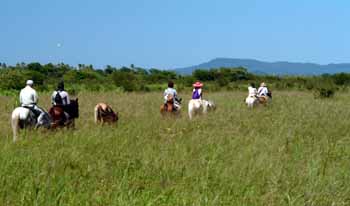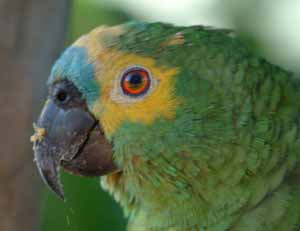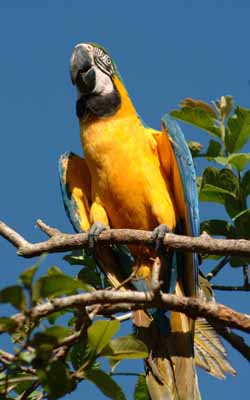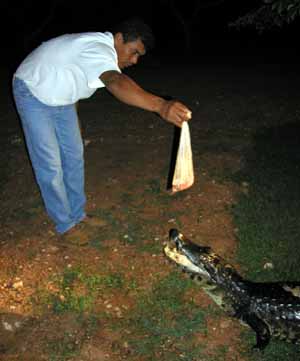Pantanal Wetlands
The Natural Paradise of the Pantanal Marshlands
 The Pantanal is the largest floodable plain in the world. Located south of the Amazon jungle, it contains an immense variety of wildlife and is far more accessible than that of the almost impenetrable Amazon.
The Pantanal is the largest floodable plain in the world. Located south of the Amazon jungle, it contains an immense variety of wildlife and is far more accessible than that of the almost impenetrable Amazon.
The Pantanal is a wildlife-protected area with colorful forests, 175 rivers and more than 250 species of birds.
Large animals roam the area including giant anteaters, pumas, ocelots and jaguars.
Everything that happens in the Pantanal depends on water, or the lack of it. For millions of years, this vast marshland has undergone four distinct seasons based on the water cycle. These periods bring with it different plant life, landscapes and animal behavior including the migration of large number of animals.
 Janurary through March is known as the flood period. Mammals concentrate in small unflooded areas of land. Though it rains more during this time, usually only an hour or two a day, the lowlands fills from the large area that drains into it. Access is restricted by boat.
Janurary through March is known as the flood period. Mammals concentrate in small unflooded areas of land. Though it rains more during this time, usually only an hour or two a day, the lowlands fills from the large area that drains into it. Access is restricted by boat.
April through June is when the waters empty and the land explodes with color, but it is the dry season that brings forth the large concentrations of birds and reptiles in the few watering holes. In October the rains begin again to fll the dry holes along with cloudy days and spectular sunsets.
The best time for visiting this wildlife refuge is between June and July, when the low water level brings forth a magnitude of wildlife to conjugate around available watering holes. Each season offer ample opportunity to view birds and other strange and unique wildlife.
 Ambiental Tours drove us from Bonito to the Pantanal; our destination was Refugio da Ilha, a family-run lodge located inside the wilderness area. It is just north of the small town of Miranda, only two hours drive from Bonito. Situated on an island in the Salobra River, this simple yet comfortable pousada is surrounded by marshlands and resident caimans.
Ambiental Tours drove us from Bonito to the Pantanal; our destination was Refugio da Ilha, a family-run lodge located inside the wilderness area. It is just north of the small town of Miranda, only two hours drive from Bonito. Situated on an island in the Salobra River, this simple yet comfortable pousada is surrounded by marshlands and resident caimans.
West of the main road, we turned off into a narrow dirt path and found ourselves in the middle of a cattle ranch. Cows moved aside as we crossed a small bridge that led to the lodge. We were greeted by the owner, a friendly woman who fussed around us speaking Portuguese and tried to usher us quickly into the house. As it was getting dark, we were more concerned about the mosquitoes than our luggage.

We soon met her son, Mauricio, who spoke perfect English. He explained that this little lodge is known around the world for its special Pantanal experience.
Over the years, Mauricio has complied a photographic and video record of life in the Pantanal. That evening he proudly displayed his award-winning video that eloquently shows the seasonal changes that bring forth different wildlife experiences.
 Through the window of our dining room we watch brightly-colored parrots and small flocks of tiny birds feed on fruit and nuts provided by the kitchen staff. Fat and happy caimans sit along the banks of the river absorbing the new day's warmth.
Through the window of our dining room we watch brightly-colored parrots and small flocks of tiny birds feed on fruit and nuts provided by the kitchen staff. Fat and happy caimans sit along the banks of the river absorbing the new day's warmth.
After breakfast, Mauricio led a horseride into the beautiful surroundings. The mountains in the distance ringed the lowlands filled with grass and crossed by streams.

 As it was November, the rains were just returning and the wildlife were preparing for the approaching floods. The dying grasses make it more venerable for wildlife, so they hide along the riparian corridors making viewing more difficult. But there are always plenty of birds to see.
As it was November, the rains were just returning and the wildlife were preparing for the approaching floods. The dying grasses make it more venerable for wildlife, so they hide along the riparian corridors making viewing more difficult. But there are always plenty of birds to see.
 In the afternoon we took a boat ride on the Salobra River to spot wild animals and birds. Our guide was very knowledgeable although he spoke almost no English. Each time he spotted a species, he stopped the boat to point it out. Each time we were amazed as to his ability to locate and identify a tiny bird off in the treetops while driving the boat. He showed each one to us in a book we used for translations.
In the afternoon we took a boat ride on the Salobra River to spot wild animals and birds. Our guide was very knowledgeable although he spoke almost no English. Each time he spotted a species, he stopped the boat to point it out. Each time we were amazed as to his ability to locate and identify a tiny bird off in the treetops while driving the boat. He showed each one to us in a book we used for translations.
We also saw cappuccino and holler monkeys. Several times we stopped to photograph the capybara, a funny-looking rodent with brown spiky hair and a snout. Capybara is the world's largest rodent, over four feet in length and weighing nearly 200 pounds. They live in bands of up to 40 animals and feed on aquatic plants at the water's edge.
 Later as we drifted in the swift moving waters past capybara and caiman hiding in the water lilies our guide suggested a swim. Lynn, speaking only a small amount of Portuguese, was sure to ask the guide if the caimans were dangerous or whether there were piranha in the river. He just laughed and dove in leaving the boat to drift free. We soon followed and enjoyed a refreshing swim drifting behind the boat.
Later as we drifted in the swift moving waters past capybara and caiman hiding in the water lilies our guide suggested a swim. Lynn, speaking only a small amount of Portuguese, was sure to ask the guide if the caimans were dangerous or whether there were piranha in the river. He just laughed and dove in leaving the boat to drift free. We soon followed and enjoyed a refreshing swim drifting behind the boat.
There are more than 250 species of birds making the Pantanal an ornothologist's dream. As we drifted along, our guide spotted several types of herons including Cocoi, Whistling and the closely related Great Egret. Wood storks and Roseate Spoonbills nested in the top of trees along the banks.
 The strangest of all was a glimspe of the Jabiru Stork. This stork is the largest flying bird in Brazil. It has wingspans of nearly eight feet and can weigh up to 18 pounds. It has a ring of red feathers around its neck but none on its head. Be sure to bring a very "long" lens for your camera as they nest in the tops of very high trees.
The strangest of all was a glimspe of the Jabiru Stork. This stork is the largest flying bird in Brazil. It has wingspans of nearly eight feet and can weigh up to 18 pounds. It has a ring of red feathers around its neck but none on its head. Be sure to bring a very "long" lens for your camera as they nest in the tops of very high trees.
 The Pantanal has one of the largest concentrations of wild fauna in the world including anteaters, alligators, monkeys, capybaras, ariranha (giant otter), herons, and many other animals. The diverse wildlife set in the rich landscape of the Pantanal is a spectacle worthy of photographers and naturalists alike.
The Pantanal has one of the largest concentrations of wild fauna in the world including anteaters, alligators, monkeys, capybaras, ariranha (giant otter), herons, and many other animals. The diverse wildlife set in the rich landscape of the Pantanal is a spectacle worthy of photographers and naturalists alike.
 Back at the pousada, with family hospitality, everyone is well fed. The guests are treated to locally-caught fish, home-raised beef, Brazilian specialties and delicious passion-fruit mousse. One of my favorite dishes is Piranha soup. This is very similar to fish soup but with a lot more bite! The caimans happily get all the dinner scraps.
Back at the pousada, with family hospitality, everyone is well fed. The guests are treated to locally-caught fish, home-raised beef, Brazilian specialties and delicious passion-fruit mousse. One of my favorite dishes is Piranha soup. This is very similar to fish soup but with a lot more bite! The caimans happily get all the dinner scraps.
 The evenings bring forth warm and clear nights with a multitude of bright stars. Walking in the dark about this little island one can hear strange sounds in the night. Unfamiliar constellations fill the sky but few resemble those in the Northern Hemisphere. The evening entertainment is feeding and photographing the snappy caimans.
The evenings bring forth warm and clear nights with a multitude of bright stars. Walking in the dark about this little island one can hear strange sounds in the night. Unfamiliar constellations fill the sky but few resemble those in the Northern Hemisphere. The evening entertainment is feeding and photographing the snappy caimans.
 The day on the river was full of screeching sounds of birds and monkeys. The approaching night brought a peaceful silence to the Pantanal. We turned off our small outboard motor, drifting free across a large lake and watched quietly as the sun dipped into the west. The sounds of distant birds and howling monkeys were replaced with the buzz of the evening's insects.
The day on the river was full of screeching sounds of birds and monkeys. The approaching night brought a peaceful silence to the Pantanal. We turned off our small outboard motor, drifting free across a large lake and watched quietly as the sun dipped into the west. The sounds of distant birds and howling monkeys were replaced with the buzz of the evening's insects.
We had far too little time to experience the varied world of the Pantanal. As seasons change and life renews, we can only dream of our next trip to this wondrous corner of the natural world.
For information about the Pantanal, contact the Ambiental Tours or see our Sponsor's Page.
